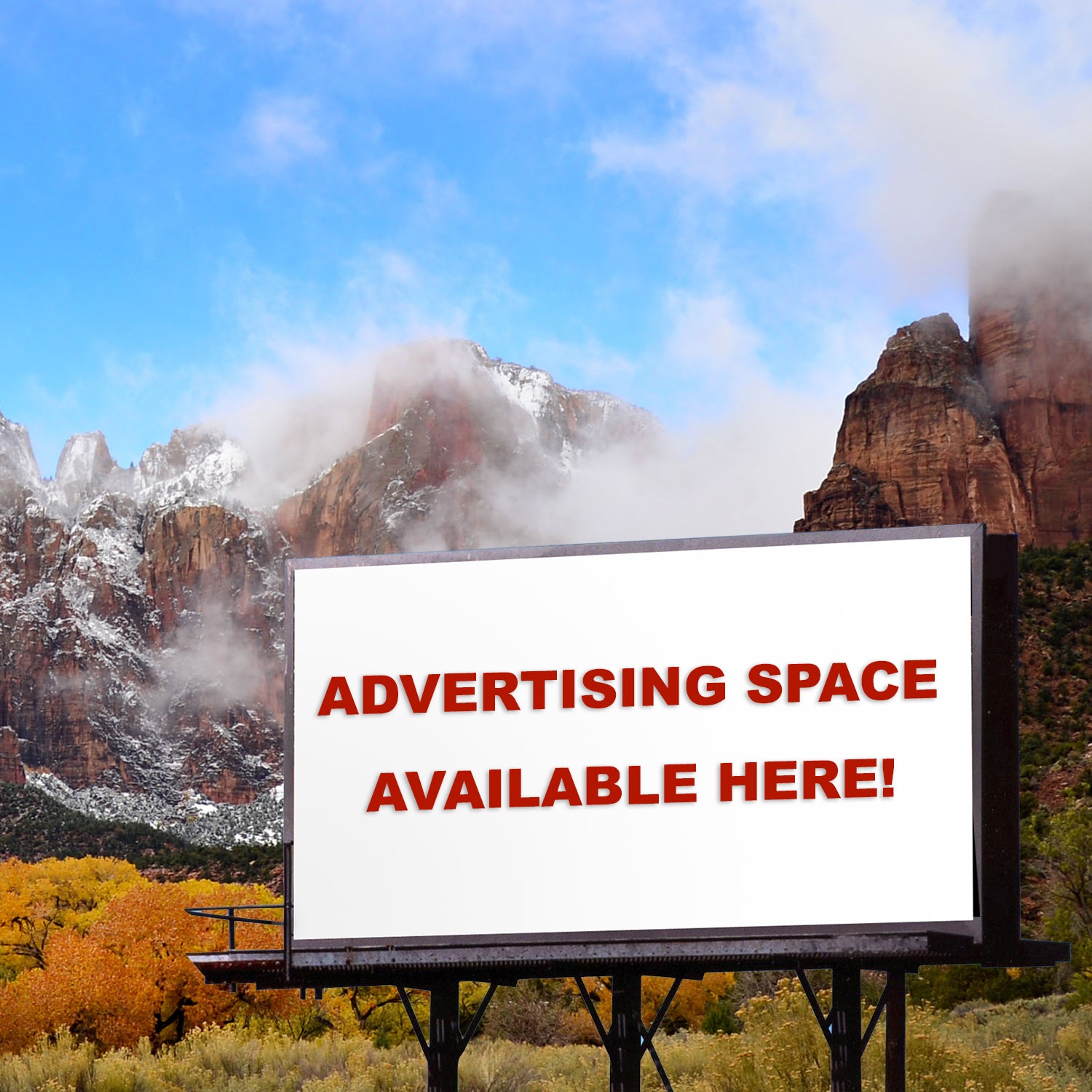The National Park Service has been in existence for 100 years now. It’s reasonable that they’d want to try something new to deal with an $11 billion maintenance backlog of decaying infrastructure and pothole-ridden roads that have gradually built up over years of underfunding from Congress. So why not deal with it the same way sports teams do and turn to corporate partnerships? The proposed plan, which comes as part of a new directive from National Parks director Jon Jarvis called , would allow naming rights to be sold on some park property.
It’s all part of the Park Service’s need to fulfill its mission statement “…to conserve the scenery and the natural and historic objects and the wildlife therein and to provide for the enjoyment of the same in such manner and by such means as will leave them unimpaired for the enjoyment of future generations.” That means the Park Service is supposed to perfectly upkeep all 411 of the properties under their control.
For now, we’re talking little things like ads in lecture halls, at bus stops, and traditional advertising on shuttle buses themselves. The language of the directive makes it seem like a win-win-win. “A successful sponsorship program can benefit the NPS … and the sponsor,” the draft order says. But of course, the worry is that the pathway to funding turns into a slippery slope to a giant national sellout.
“You could use Old Faithful to pitch Viagra,” Jeff Ruch, executive director of Public Employees for Environmental Responsibility, . “Or the Lincoln Memorial to plug hemorrhoid cream.”
The draft of the order even includes a provision that, for the first time, would allow fundraising for the parks to come from places like Kickstarter because, as Order #21 says, “Crowdfunding has become a popular way to seek donations for a project, often via the Internet.”
The whole plan is just a terrible, awful, no good, very bad idea and would go into effect with the signature of the director at the conclusion of the review process.
Here’s why it’s a total sell-out move. America’s national parks already function a little too much like Six Flags. The beauty of the parks is that they offer us a vision of America before our westward expansion, not a vision of America at a strip mall. And to that end, Congress’s withholding the $11 billion to fix up the parks isn’t necessarily destroying the parks; a lack of capital funding might be the most powerful force preventing their spiral into overdeveloped mediocrity.
The beauty of the parks is that they offer us a vision of America before our westward expansion, not a vision of America at a strip mall.
Newton Drury was the Park Service director from 1940 to 1951. He oversaw the huge post-war boom in the parks’ popularity. And he was famously against increased budgets. Under Drury’s conservation-minded approach, construction is necessarily a bad thing. “We have no money,” he was quoted telling the Sierra Club’s board of directors. “We can do no harm.”
Historically, the Park Service has fulfilled its dual Congressional mandate of preservation and public enjoyment by building hotels, RV hookups, ice rinks, visitor centers, and roads—all seemingly in service of getting as many people as possible as close as possible to famous attractions. What we’ve come to understand in the last several decades is that the development of our parks fails both halves of the double mandate of preservation and public enjoyment. It is both destructive and unenjoyable.
Much of the backlog deals with updating the kinds of things that make the parks less wild. “About half of the backlog is transportation items like roads, bridges, parking lots, trails,” National Park Service spokesman Jeffrey Olson recently wrote in an email. “The other half is the infrastructure of buildings, water systems, and wastewater systems.”
Park funding is incredibly important. It’s important for to have well-equipped rangers on the beat to stop amazing actresses like Vanessa Hudgens from into desert sandstone. It’s important to have search-and-rescue teams to fish wayward YouTubers out of Yellowstone’s iconic hot springs after they decide that a steamy off-trail closeup is really going to make this video something special. And it’s really important to pay for sanitation—for obvious reasons. But beyond the basics, capital infrastructure should be focused outside of park boundaries. Some parks, like Zion, which is boxed into the bottom of a narrow canyon, have already adopted aggressive policies to get people to leave their vehicles at the edges of the park and walk, bike, or take a shuttle in.
Sure, for things we can’t do without, like frontcountry bathrooms and clean drinking water, Congress needs to go ahead and find the money. Upkeeping America’s Best Idea has to be worth a couple of fighter jets. But the National Park Service should be in the business of preventing roads and buildings. For those things that never should have been built in the first place, let them become a festering monument to our misplaced ambition.
In recent years, a movement has grown to privatize federal lands by giving them back to the states.
“I believe we should transfer as much federal land as possible back to the states and ideally back to the people,” Senator Ted Cruz told the Las Vegas Review-Journal back in December. In practice, critics of this plan say, giving the land back to the states means stripping protections from them and turning them over for resource extraction.
In GOP debates, the notion that the federal estate is too large is not only part of the debate, but popular among conservative primary voters, though Donald Trump told Field & Stream he didn’t like the idea of divesting the federal estate.
Parks are already under assault. In Grand Canyon, on Navajo land down to the confluence between the Little Colorado River and the Colorado. Builders in Tusayan, the small gateway community to the park, are still trying to get . And while new uranium mines near the Grand Canyon have been banned, old “zombie mines” can still .
The threats are coming from all sides, but this new one is coming from within. Allowing companies to cobrand America’s national parks is a very real form of privatizing them—extracting value of the public good selling it off to the highest bidder. The soul of the parks shouldn’t be for sale.


